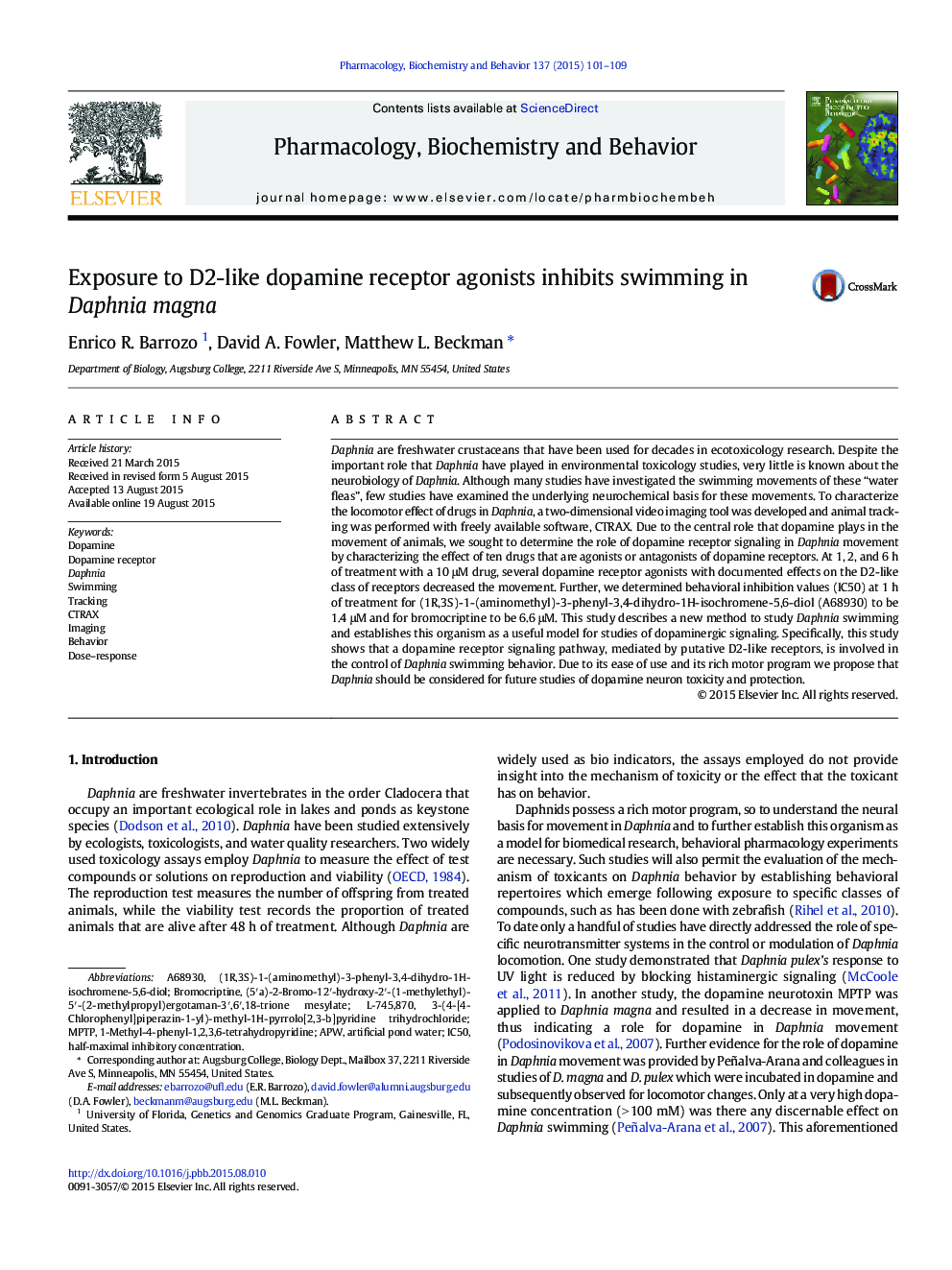| Article ID | Journal | Published Year | Pages | File Type |
|---|---|---|---|---|
| 2012767 | Pharmacology Biochemistry and Behavior | 2015 | 9 Pages |
•Dopamine D2-like receptor agonists inhibit Daphnia swimming.•A new method for studying Daphnia swimming was developed and evaluated.•The free software, CTRAX, can be effectively used to track Daphnia movement.•This tool will be useful in determining the mechanisms of drug action in Daphnia.
Daphnia are freshwater crustaceans that have been used for decades in ecotoxicology research. Despite the important role that Daphnia have played in environmental toxicology studies, very little is known about the neurobiology of Daphnia. Although many studies have investigated the swimming movements of these “water fleas”, few studies have examined the underlying neurochemical basis for these movements. To characterize the locomotor effect of drugs in Daphnia, a two-dimensional video imaging tool was developed and animal tracking was performed with freely available software, CTRAX. Due to the central role that dopamine plays in the movement of animals, we sought to determine the role of dopamine receptor signaling in Daphnia movement by characterizing the effect of ten drugs that are agonists or antagonists of dopamine receptors. At 1, 2, and 6 h of treatment with a 10 μM drug, several dopamine receptor agonists with documented effects on the D2-like class of receptors decreased the movement. Further, we determined behavioral inhibition values (IC50) at 1 h of treatment for (1R,3S)-1-(aminomethyl)-3-phenyl-3,4-dihydro-1H-isochromene-5,6-diol (A68930) to be 1.4 μM and for bromocriptine to be 6.6 μM. This study describes a new method to study Daphnia swimming and establishes this organism as a useful model for studies of dopaminergic signaling. Specifically, this study shows that a dopamine receptor signaling pathway, mediated by putative D2-like receptors, is involved in the control of Daphnia swimming behavior. Due to its ease of use and its rich motor program we propose that Daphnia should be considered for future studies of dopamine neuron toxicity and protection.
